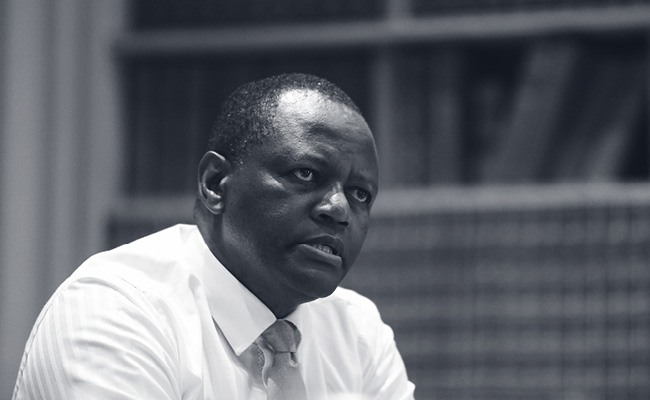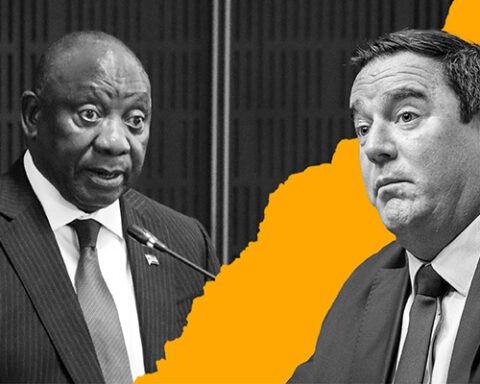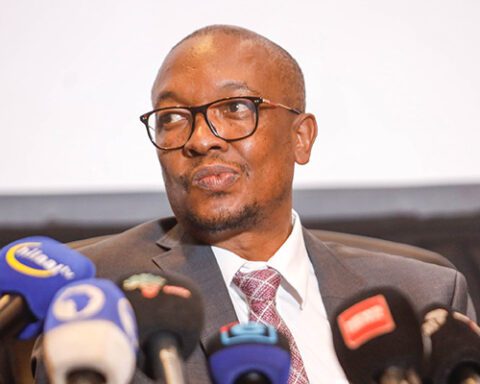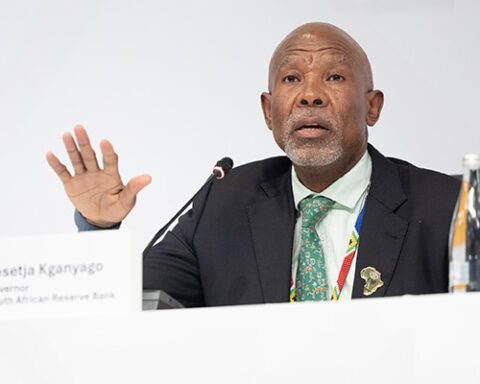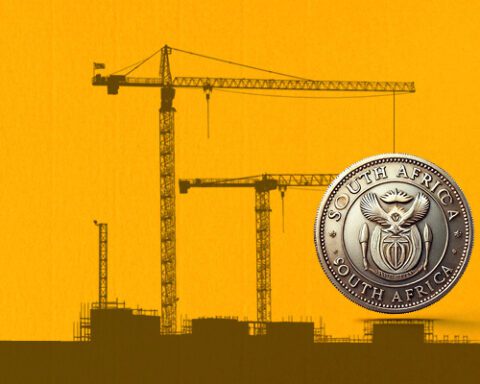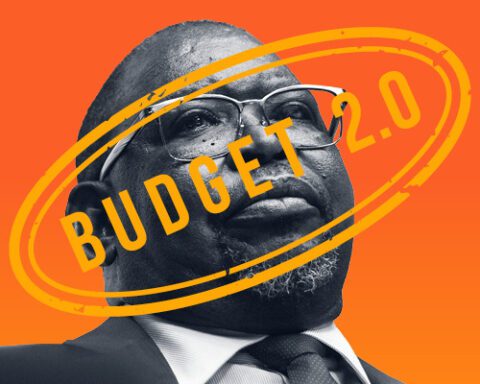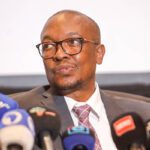Transnet chair Andile Sangqu is hoping for a R50bn cash injection from government to help the parastatal manage its growing and worrying debt burden, while speeding up the introduction of private sector participation in the rail and port operator.
Sangqu, formally head of Anglo American South Africa, says in a wide-ranging interview with Currency at the Cape Town Mining Indaba that he was shocked at the poor state of Transnet after he was appointed in 2023. The interventions, he says, would put it on a firmer operational trajectory.
The most immediate problem is a broken balance sheet: “We have a liability close to R140bn that is costing us about R14bn-R15bn a year to service,” he says. Transnet announced in its most recent financial results that it had technically breached one of its debt covenants, though it had sought and received waivers from its lenders to prevent this triggering a default in its lending agreements.
One of the biggest problems, says Sangqu, is that half of the roughly 1,000 locomotives that Transnet bought from China Railway Rolling Stock Corporation (CRRC) are currently out of operation and in need of repair.
In 2023, government provided Transnet with a R47bn guarantee, which allowed the logistics giant to raise about R600m.
The problem, says Sangqu, is that while this increase did help Transnet achieve volume increases on its rail network, the benefit was almost entirely absorbed in the financing costs. So, Transnet is hoping the government will provide it with R20bn support over the next year, with boosts of R20bn and R10bn in subsequent years, to really put it on a new track.
Sangqu’s comments match those made recently by ANC transformation committee chair Zuko Godlimpi, who called for “something massive” to boost the Transnet turnaround. Speaking after the ANC’s pre-state of the nation lekgotla, Godlimpi said: “Had it not been for the R245bn support package [for Eskom] we would not be here, and this was against institutional advice [because] everyone had given up on the capacity of Eskom”.
The possibility of more private sector participation in Transnet was one of the subcurrents in the mining conference, with industry players tentatively discussing possible participation models that would help South Africa restore its ailing logistics network.
Speaking on a panel at the indaba, Transnet CEO Michelle Phillips also spoke of the need for government support, to lure the private sector. “We need funding, resources and skills that the private sector has,” she said.
Phillips said the parlous state of the network is one reason Transnet is set to fall short of its rail freight target for the year to March of carrying 170Mt. Phillips said Transnet now believes it will hit between 160Mt and 165Mt. But, she said, this is good progress, as “we are 9Mt above where we were last year”.
Private participation
Transnet has recently published its “network statement”, which has been approved by transport minister Barbara Creecy. It technically paves the way for third-party rail operators to participate in the rail network fairly.
Transnet has welcomed this process, despite the fact that it would ultimately result in train operators competing on the network against Transnet’s own operations.
Sangqu explains, for example, that on the rail corridor from Mpumulanga to Richards Bay, the capacity of the line is about 90Mt. Transnet on its own could probably ramp that up to about 65Mt, but that would leave a volume of 25Mt that private sector operators could access because there is clearly demand. The same applies to the Sishen iron ore corridor.
Sanqu says, however, that it is unlikely this private sector involvement could be realistically achieved within the next three years – though that doesn’t mean Transnet won’t start with the preparation much sooner.
“We want to get to point C, but you can’t get to B without going to point A. And you can’t achieve C without doing B. And I think we are picking up a little bit of a dissonance, even from the public and the media, who want us to simply go to C. But without going to B, maybe C is not quicker to achieve.”
In the meantime, Transnet is trying to find a way to get some of its CRRC locomotives back into action. The Chinese company and the rail operator are locked in a dispute about the corruption involved in the signing of the contract, so the Chinese company is refusing to maintain these locomotives. Oddly, a maintenance agreement was not part of the sales contract.
To get around the maintenance problem, Transnet contracted with original equipment makers (OEMs) and hopes, over the next two years they will be able to bring back 115 of the locomotives. Transnet is hopeful more OEMs could also be introduced to deal with the other locomotives currently sitting in workshops, Sangqu says.
Transnet’s other headache is electricity theft. But there are possible solutions here too, such as including large batteries that could bridge trains across regions of the track without power. “I think maybe there isn’t an appreciation of the complexity, and the interconnectedness and the multi-layeredness of all of these things,” he says.
This coverage of the Mining Indaba was brought to you in association with Northam Platinum.
Top image: Transnet chair Andile Sangqu. Picture: J. Countess/Getty Images
Sign up to Currency’s weekly newsletters to receive your own bulletin of weekday news and weekend treats. Register here.
